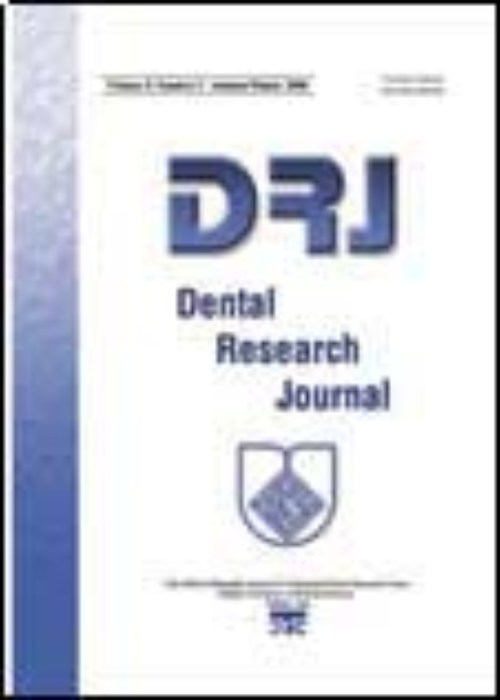Antimicrobial efficacy of Acacia nilotica, Murraya koenigii (L.) Sprengel, Eucalyptus hybrid, Psidium guajava extracts and their combination on Streptococcus mutans and Lactobacillus acidophilus
Author(s):
Abstract:
Background
The aim of this in vitro study was to assess antimicrobial efficacy of Acacia nilotica, Murraya koenigii (L.) Sprengel, Eucalyptus hybrid, Psidium guajava extracts, and their combination on Streptococcus mutans and Lactobacillus acidophilus.Materials And Methods
The branches of four plants were collected, identified, and authenticated by a taxonomist. The plants were rinsed in water, healthy leaves were separated and shade dried over a period of 34 weeks. Soxhlet apparatus using ethanol was employed for extraction procedure. The combinations of plant extracts were prepared by mixing equal quantities of 10% solutions of each of these extracts. 0.2% chlorhexidine and dimethyl sulfoxide were used as positive and negative controls, respectively. The antimicrobial efficacy testing was done using agar well‑diffusion method under anaerobic conditions. The mean diameter of inhibition zone was computed and compared between different categories using one‑way analysis of variance and Tukeys post‑hoc test. A qualitative assay was carried out to identify the various phytochemical constituents in the plants. The data was assessed by SPSS version 20. The statistical significance was fixed at 0.05.Results
All the plants extracts and their combinations inhibited S. mutans and L. acidophilus. However, the quadruple combination of A. nilotica M. koenigii (L.) Sprengel Eucalyptus hybrid P. guajava produced the maximum inhibition zone (23.5 ± 2.2 mm) against S. mutans. Although, 0.2% chlorhexidine produced the highest inhibition zone against L. acidophilus (18.8 ± 1.2 mm), A. nilotica extract produced maximum inhibition among the various plant extracts and their combinations (14.1 ± 1.8 mm).Conclusion
All the individual plant extracts and their combinations were effective against S. mutans and L. acidophilus. These could be tried as herbal alternates to chlorhexidine. However, these in vitro results have to be further evaluated for any toxicity of the polyherbal combinations in animal models and effectiveness has to be assessed using in vivo studies on humans.Keywords:
Language:
English
Published:
Dental Research Journal, Volume:13 Issue: 2, Mar 2016
Page:
168
magiran.com/p1512486
دانلود و مطالعه متن این مقاله با یکی از روشهای زیر امکان پذیر است:
اشتراک شخصی
با عضویت و پرداخت آنلاین حق اشتراک یکساله به مبلغ 1,390,000ريال میتوانید 70 عنوان مطلب دانلود کنید!
اشتراک سازمانی
به کتابخانه دانشگاه یا محل کار خود پیشنهاد کنید تا اشتراک سازمانی این پایگاه را برای دسترسی نامحدود همه کاربران به متن مطالب تهیه نمایند!
توجه!
- حق عضویت دریافتی صرف حمایت از نشریات عضو و نگهداری، تکمیل و توسعه مگیران میشود.
- پرداخت حق اشتراک و دانلود مقالات اجازه بازنشر آن در سایر رسانههای چاپی و دیجیتال را به کاربر نمیدهد.
In order to view content subscription is required
Personal subscription
Subscribe magiran.com for 70 € euros via PayPal and download 70 articles during a year.
Organization subscription
Please contact us to subscribe your university or library for unlimited access!


